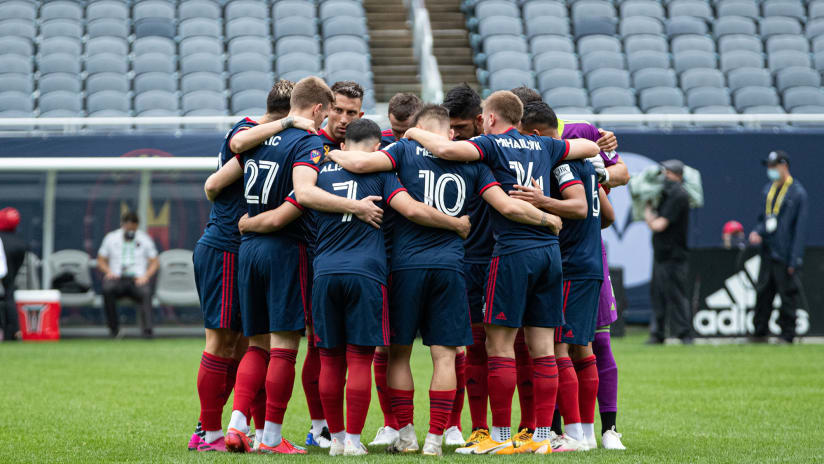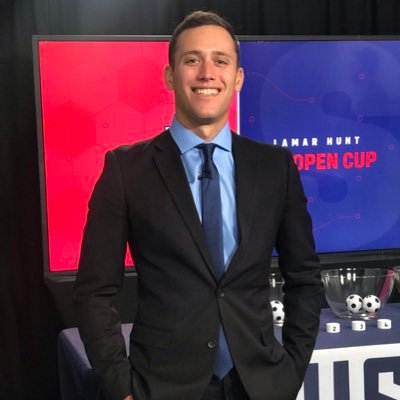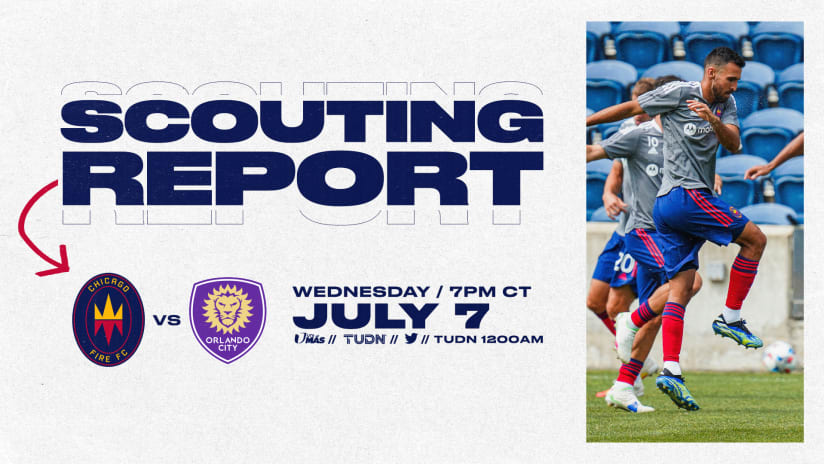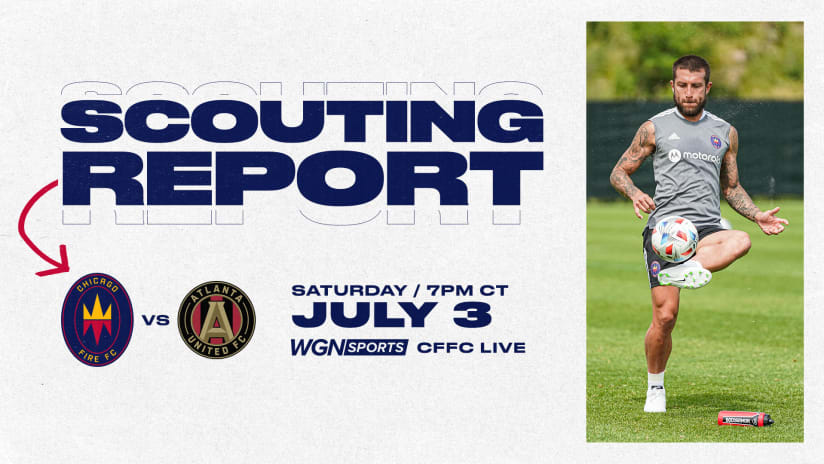Big sigh
I was hoping I wouldn’t have to write this piece for at least another few weeks, but here we are with a long, cold, off-season in front of us (wear a mask).
It’s time to take a look in the rearview, just briefly, to fully grasp what the future holds for the Chicago Fire after a disappointing end to a season that at many times was filled with hope and excitement.
I’m here to tell you that the excitement and hope you felt coming into this season should still carry over into 2021. If anything, it should grow because (hopefully) fans will finally be able to join us at Soldier Field at some point next year. In addition, the group that you saw this year laid some sturdy and reliable building blocks for the future.
Take what you will from this article, but here are my thoughts on the 2020 season…
IT’S 2020
This section is not to make excuses or anything of the sort, but to simply give you the facts of the challenges 2020 brought to Major League Soccer and specifically to the Fire, who were in the midst of a complete overhaul.
First, it became a 23-game season with 10 teams making the playoffs. That’s 11 games fewer than normal, and three more qualifying teams than normal.
A lot of folks are up in arms about the fact the Fire didn’t qualify with the expanded field. Fair enough. 10 out of 14 teams in the Eastern Conference got a chance to play for MLS Cup, but the increased number of teams was implemented to account for the fact that the sample size of games from which to judge was cut by a third.
If the Fire had eleven more games of getting to know one another, fine tuning pieces, allowing for injuries to properly heal, etc. then perhaps they’d have qualified. Perhaps they’d have gone on a tear and finished in fifth or sixth place. Perhaps they’d dip even further. Every team has to deal with that, but for a team like the Fire - who were practically an expansion team given the 18 new signings - this small sample size plays a role.
This squad was being pieced together in the very late stages of 2020 just weeks before preseason started in February. Ignacio Aliseda and Gastón Giménez didn’t arrive in Chicago until the regular season was already underway. Luka Stojanovic and Boris Sekulic didn’t land in the Windy City until after the second game of the season at New England.
18 new players. This is unheard of for an established football team. Coaches and players I’ve talked to around the game, some over in Europe, were floored when I explained the situation in Chicago. The Fire were an expansion team this year with an entirely new technical staff, new coach and new identity to mold.
Given ALL of this, the Chicago Fire, not once, were played off the field.
Even battling against the eventual Supporter Shield winners while down a man for nearly an hour, the Fire found ways to be dangerous against the Philadelphia Union and threatened to steal a point on the road in a near impossible situation.
Not once, but twice, the Fire went toe-to-toe with Western Conference winners Sporting Kansas City.
They got a win and a narrow opening day loss against the reigning MLS Cup Champion Seattle Sounders, who went on to finish second in the West.
See where I’m going with this? Tony Meola and I never walked away from a game saying “Boy, they were played off the pitch tonight. Never had a chance.”
So, with all of that in mind, let’s dive even deeper into why they were so competitive and how they can improve heading into next season.
BOBBY AND THE BACKLINE
Let’s start with Mr. Shuttleworth.
The dude balled out this year. His save on Atlanta’s Adam Jahn on Sept. 27 will be up for Save of the Year. Despite only keeping four clean sheets (which doesn’t only fall on him), he kept the Fire in so many games this year. After Kenny Kronholm went down, it was never a question who was going to step in. It was, however, a question as to how much the 33 year-old Shuttelworth had left to offer. The overwhelming consensus was…a lot.
His command of the penalty area and communication went a long way with a backline that featured Homegrown rookie Mauricio Pineda and 21-year-old Miguel Navarro. His shot-stopping ability was on full display most games. Shuttleworth out-performed expectations, perhaps even his own.
Captain Francisco Calvo had his contract picked up before the Fire’s match against Montreal on Oct. 3, and rightfully so. He continues to be a leader and was coaching up Pineda along the way. Sure, there were some mistakes, but mistakes from your centerback are under a military-grade microscope. I’m not saying they shouldn’t be, but Calvo also led the league in interceptions (77, via Opta) and was a reliable ball-winner.
Like Shuttleworth, Pineda outperformed expectations. Due to injuries Johan Kappelhof endured, the Bolingbrook native was not only asked to start every game this season (a first for a Chicago homegrown in their rookie season) but was also asked to play a position that isn’t his best. I think Pineda’s best game of the year was against Minnesota, a 2-2 draw on Nov. 4. He was active, had great lateral movement, read the game really well and finished off a chance with composure. In a condensed schedule, Pineda was third in the league in minutes played and that can’t go unnoticed. The Fire know they have a local boy who can play either centerback or in midfield as a No. 6.
Boris Sekulić was steady at right-back. In Wicky’s system, the outside backs are crucial to providing extra numbers and mismatches in the final third and need to cover a lot of ground. We saw the Serbian play some of his best football the past couple of weeks. I imagine some depth will be needed in the offseason at both Pineda’s and Sekulić’s positions. The two barely stepped off the field, and Sekulić started every game he was available. Competition at positions (like Shuttleworth has created at goalkeeper) is a coach’s dream. I think you’ll see some more of that competition on the right side of the defense next season.
Miguel Navarro has proven he can play at this level. I know your next thought will be his giveaway against NYCFC, but, like Tony said on-air, “The Fire didn’t miss out on the playoffs because of that mistake.” I couldn’t agree with him more. It was a series of unfortunate events and moments throughout the season, not just that mistake from Navarro. The Venezuelan covers a lot of ground, is quick, and by all accounts is a great teammate. He studied under a great veteran in Jonny Bornstein, and the aforementioned competition at that position was great for Navarro. Bornstein ended up winning the battle and rightfully so, but it will only help Navarro.
You know what you get out of Bornstein. He is a quiet leader who is a great locker room guy. The 36-year-old has said time and time again how good he feels physically and mentally, and I think we saw a lot of that this year.
ENGINE ROOM
I won’t spend too much time on these two because you already know what the deal is. Álvaro Medrán and Gastón Giménez. The folks over at MLSsoccer.com had them as “Under the Radar” a couple weeks ago. Malarkey. Every coach who has played against the Fire knows who these two are and how much they can influence a football match. The may be the best 6/8 tandem in MLS. Next, please.
The ever-changing, all important No. 10 position. It’s easily the most difficult position to find and get right in this league. After the switch to a 4-2-3-1 formation coming back from the MLS is Back Tournament in Orlando, this position became crucial. The flip-flop of Ignacio Aliseda to the wing and Fabian Herbers to the No. 10 was a quick fix. Then, teams started keying in on Herbers and closing down the space he had to play. It then became a rotation with Djordje Mihailović. Come January, I think this will be towards the top of Wicky’s wish list. It could either be a really dynamic, game-changing winger to create room for Herbers (or whoever occupies the No. 10) or a new No. 10 flat out. This isn’t to say that Herbers, Mihailović, and Aliseda don’t have their role within the squad because they all do, but when you look across the board at MLS, you need someone of immense quality further up the field to really go after the game and make plays with the ball at their feet. This will also take a lot of the pressure off of a man who needs no introduction…
DELIVERY
Gimenez’s role as a Designated Player is a bit more nuanced, and his impact can’t be quantified in the same way Robert Berić’s can, but the Slovenian has delivered in just the way the Fire needed him. Your No. 9 who was a proven goal-scorer at the highest level in Europe brought that same goal-scoring prowess with him across the pond.
He ended up with 12 goals on the season, tied for second in MLS. That’s including a stretch of seven games without a single tally. He became an absolute killer in front of goal, and he was by far the most in-form goal-scorer in MLS for the last two months of the season.
However, the pessimists will say that if anything would happen to Berić from an injury standpoint, the Fire would be in a tough spot and they are not wrong.
CJ Sapong ended up only playing eleven games due to injury, quarantine and the birth of his daughter. Sapong’s contract is up this season. Depth at the No. 9 position is a must in any league, because you simply don’t know what will happen and you need to be prepared.
For Berić, next year will hopefully be more of the same. With some new pieces and growth of individuals and the group, it will allow him to stay further up the field and put himself in good positions to score and occupy centerbacks. That ultimately frees up space elsewhere.
STYLIN’
With any team, you want to know what they are trying to accomplish. With the Fire, that much was pretty clear. They want to keep the ball and force teams to defend. When they go forward, it is with pace and a lot of numbers. Those numbers sometimes leave the likes of Pineda and Calvo exposed, but that’s simply the nature of the beast. For a fan, it is a really exciting brand of football and an entertaining one that always keeps you on your toes.
The wingers are always in advanced positions and occupying the limbo area in between the lateral lines to allow for space for the outside backs to get forward or take on defenders on their own. Combination play between the wingers and outside backs is of a premium when things are really clicking.
Defensively, a high press was implemented after the MLS is Back Tournament, and it was a joy to watch. Chicago constantly posed problems to the opposition, forcing them make a decision between keeping the ball and risk losing it or play it long, allow the Fire to win seconds, and go from there.
Having a clear-cut game plan and tactical identity goes such a long way. Now that it’s established, it will only make welcoming new guys and firming up the current ones that much easier.
FINAL THOUGHTS
I won’t try put any more positive spins on this season.
The fact that the Fire missed out on the postseason hurts.
The fact that fans were not allowed to enjoy the return to Soldier Field hurts.
2020, on the whole, has hurt.
It is truly always darkest before the dawn though, and despite all of the bad bounces, quarantines, VAR mishaps, etc. the Fire will be back for another season next year with a clean slate and a new, established identity and I cannot wait.
Continue to practice social distancing and mask-wearing. Continue to care for one another in these divisive times. Continue dreaming of the day we can all be together along the lakefront.





